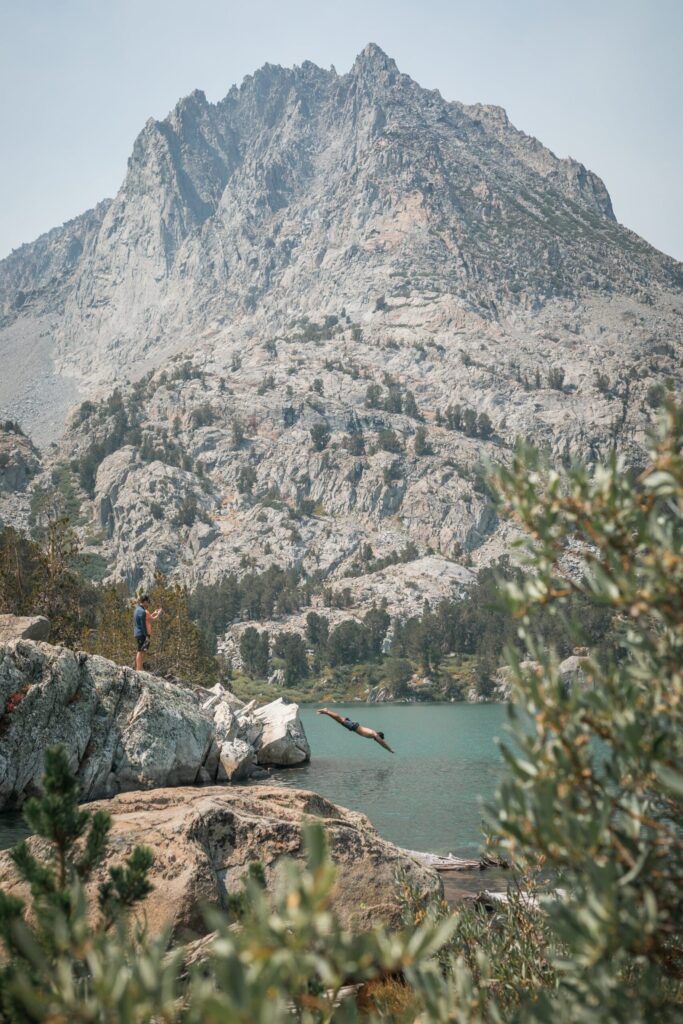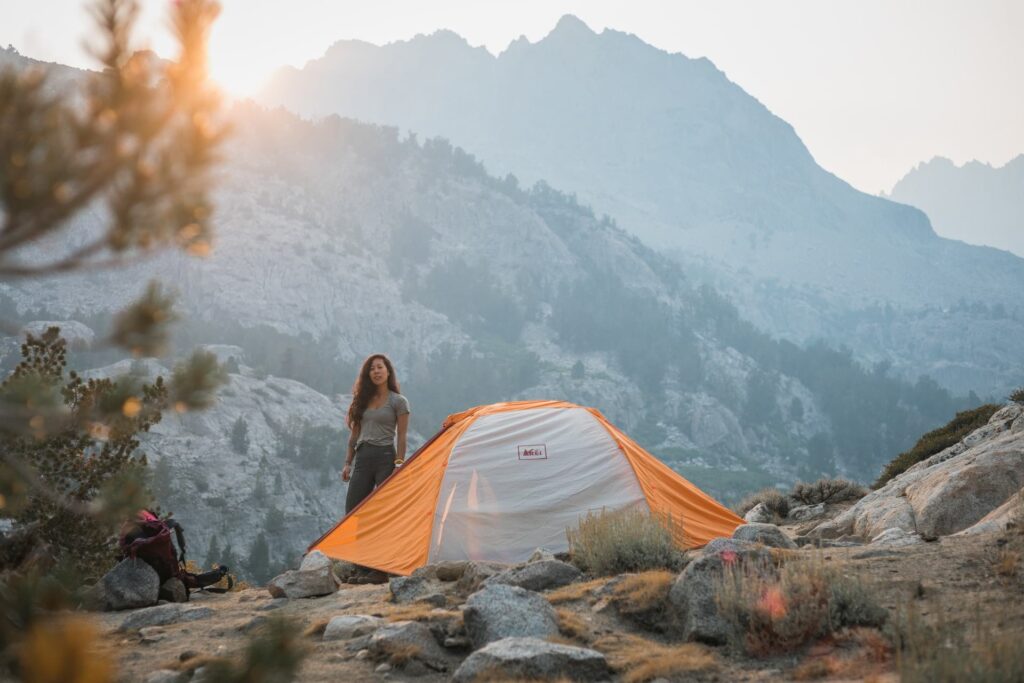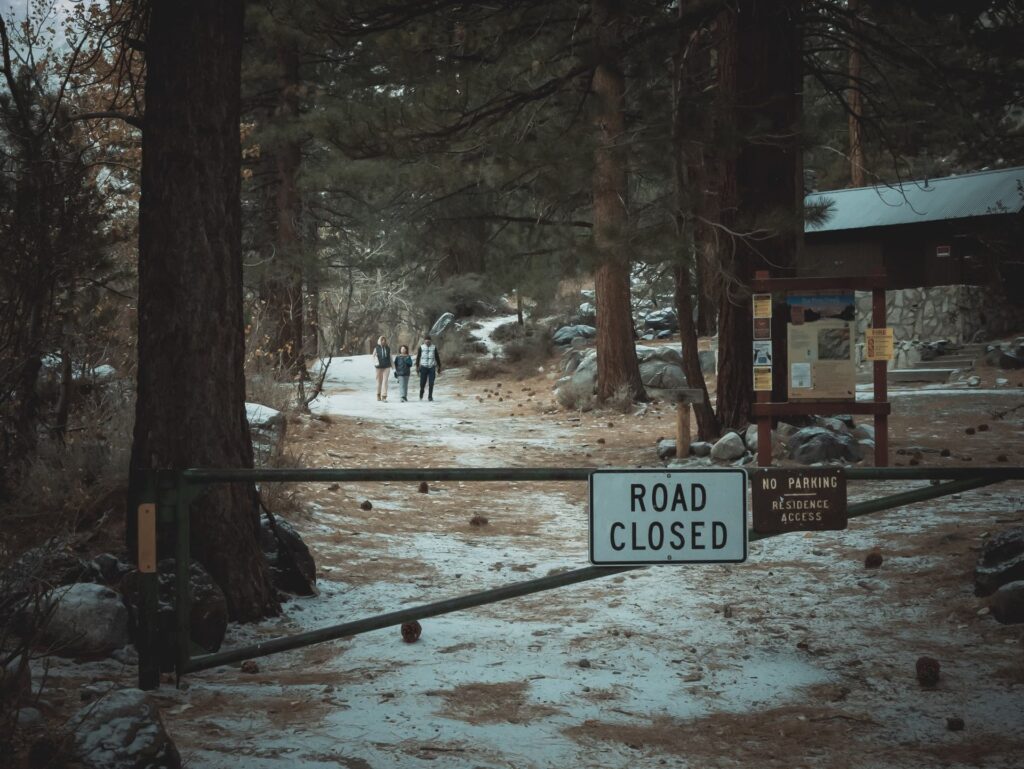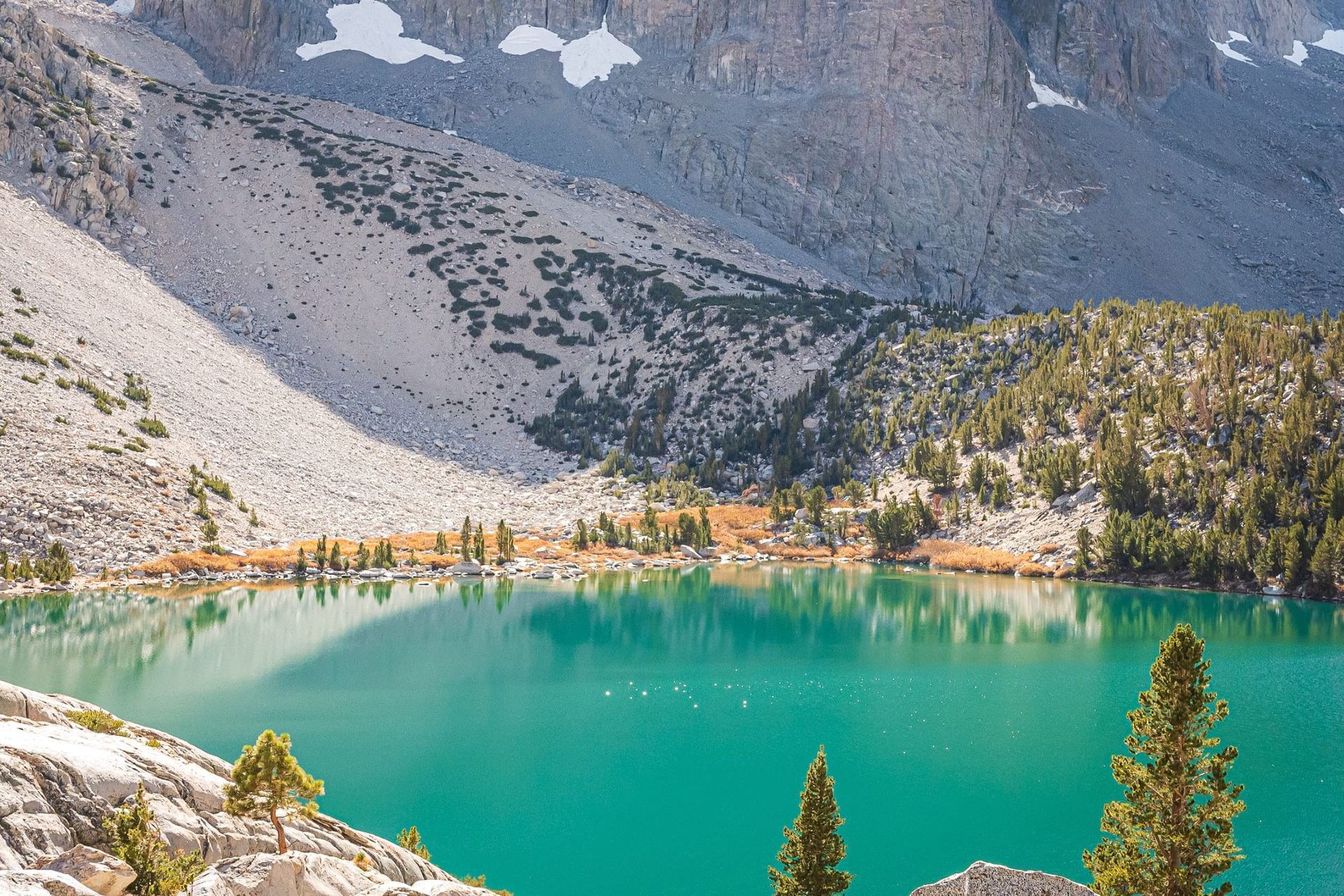If you’re looking for an outdoor adventure in California, Big Pine Lakes should be at the top of your list. Just a four-hour drive from LA, the Big Pine Lakes Trail is located in Inyo National Forest and is popular with adventure seekers. In fact, hundreds of people visit every year to see the incredible glacier lakes.
There is so much to do and see in Big Pine Lakes it can feel overwhelming trying to plan a trip and fit everything in. So, in this post, we’ll give you all you need to know about this world-renowned hike and give you our tips on how to make the most of your trip.
Planning a trip to Death Valley? Check out our one-day itinerary to make the most of this unique experience.
Get to Know Big Pine Lakes
Covering almost 25 kilometers of rocky trail, Big Pine Lakes is home to seven glacier-fed lakes that are definitely worth a visit. Not to mention many cascades, creeks, and even a few waterfalls to admire on the way.
Located in the Eastern Sierras Nevadas, hundreds of people flock to Big Pine Lakes each year for hiking, camping, kayaking, and climbing.
The Big Pine Lakes trail is one of the most popular which offers a range of activities as well as opportunities to see the major lakes. There’s an altitude change of around 5,500 feet on this trail so it is rated as difficult, but there are easier options for those looking for something a little less full on.
When to Go To Big Pine Lakes
Big Pine Lakes is best to visit between July and mid-October when the snow has melted and the weather is much milder. October is an especially popular time for the breathtaking fall colors, but you’ll also find it packed during the summer when the weather is warmest.
If you do go in the fall, be warned there is still a chance of snow, and the temperature drops quite considerably at night so you’ll need to layer up for camping.
Although it’s not recommended to visit Big Pine Lakes in the winter, it is much less crowded during the colder months and through to late Spring.
How to Get to Big Pine Lakes
From Highway 395 in Big Pine California, you’ll need to go west at Crocker Street to leave town. Then, the road you’re on will eventually become Glacier Lodge Road. Follow that past the campgrounds and you’ll find overnight trailhead parking if you’re planning a camping trip, or there is day parking around a mile further down the road.
Where to Stay When Hiking Big Pine Lakes
Along Highway 395 there are tons of options for places to stay including RV parks, motels, and even teepee glamping if you’re looking for something a little more unique.
On Glacier Lodge Road, there are campgrounds if you’re looking to camp near Big Pine but still want to be close to amenities.
The Glacier Lodge is also a great option if you want the comforts of a hotel right near the trailhead. They have rental cabins alongside their campsites, giving a range of options.
What to do in Big Pine Lakes
There is so much to do in Big Pine Lakes and you’ll struggle to visit all seven lakes in a day, but here are some ideas to make the most of your trip.
Day Hike
To cover four of the major lakes, a day hiking trip is your best option. You’ll need to arrive the night before to get an early start, but you’ll be back on the same day.
It’s a lot of ground to cover for day hikers, but a planned hiking day will let you see lakes one through four with enough time to enjoy each.
Swimming

If you’re visiting in the summer when the weather is warm, the blue waters in the lakes are perfect for a swim. The turquoise waters are fed from a glacier so are crystal clear and a great way to cool off in the heat.
Swimming isn’t recommended in the colder months however, because it can get extremely cold with the drop in temperature.
Paddleboarding and kayaking
What better way to explore the tranquil waters of the lakes than on a paddleboard or kayak? Bear in mind you’ll have to trek to the first lake with your equipment, but taking either out on the water is a unique experience that lets you take in some spectacular views, as well as take some incredible photos.
Climb the Cloud ripper
Standing as the 58th highest peak in California, the Cloudripper is in the Inconsolable Range near the Palisades. There’s an entire hike to get to this mountain which takes you by all seven Big Pine Lakes (with a small detour to go check out number five).
You’ll hike a dirt path with plenty of tree cover until you reach the sixth lake, and then take on some off-trail hiking to the seventh lake. Once you get there, it’s uphill to the Cloudripper which is classified as a Class II scramble.
This is a hike for experienced hikers but it is one of the most incredible views in the range once you reach the top and a great hike to see all the glacial lakes.
Hiking The Big Pine Lakes Trail
The Big Pine Lakes North Fork Trail is the most popular hike. Around 14 miles in length the trailhead is at Big Pine Creek Campground which is great if you’re camping to get an early start.
This popular trail is dog-friendly and the elevation gain is around 3000 feet from start to finish. The terrain does get steep and rocky in areas and you will need to cross a few small creeks so bear that in mind when choosing your footwear.
The first half of the trail is exposed so you’ll need plenty of sunscreen in the summer, but the second half is mostly shaded which is a nice, cool end to the trail.
Lake 1 is only around five miles in, so you could just hike to that one and back if you’re looking for something a little easier and shorter.
Lake 1, Lake 2, and Lake 3 are the most beautiful and only around half a mile from each other (a lot like the Boulder Chain Lakes) so this is another shorter hike you can take if you’re not ready to take on the entire trail.
Where to Camp in Big Pine Lakes

You’ll find a few different public campgrounds at the base of Big Pine Lakes near the lodge. The main ones are the Big Pine Creek Campground and the Glacier Lodge Campground.
Glacier Lodge is nearest to the trailhead which gives you better access early in the morning to start your trip. The lodge also offers breakfast, lunch, and dinner which is great before and after a long hike.
There are also a few campgrounds a little further away which offer some more competitive prices if you’re looking for a bargain. Some favorites are:
- Clyde Glacier Group Campground
- Palisade Glacier Group Campground
- Upper Sage Flat Campground
Don’t just stop at the first campground you find, some of the closer ones have incredibly scenic views to make the trip for overnight hikers that much better.
What to packing for an overnight camping trip in Big Pine Lakes
If you’re planning on an overnight trip at Big Pine Lakes to make the most of your time there, make sure you pack the following gear to stay safe while you’re exploring:
- Waterproof hiking boots and crampons for the rocky terrain
- Energy bars
- A large, insulated water bottle
- A lightweight sleeping bag
- A lightweight jacket (you’ll be surprised how cold you get in the night)
- A tent
- Sleeping pad
- Portable phone charger
- Backpacking pack
- Water filter
- First aid kit
- Bug spray
- A torch
- GPS device
It is difficult to get lost on a hike in Big Pine Lakes because the trails are clear and marked, but you should always pack the camping essentials just in case the worst should happen.
Do You Need a Permit to Hike Big Pine Lakes?

Yes, you do need to buy a wilderness permit to hike Big Pine Lakes and you’ll need to stop in town to pick them up before you head to the trailhead.
Lone Pine is one place that provides the permits and is a good option if you’re traveling from LA.
Wherever you get your permit, make sure to call ahead a couple days in advance to arrange a late pickup if you’re planning on arriving late. They’ll leave your permit in a lockbox outside if you miss normal business hours.
Want another trip to add to your bucket list?
Big Pine Lakes is definitely a trip every backpacker should add to their dream list. It’s hard to explain the beauty of the lakes unless you’ve seen them yourself. It can get a little crowded on the trail in peak summer months, but it’s worth it to see the glacier-fed lakes in all their glory.
If you’re looking for something a little more adventurous to add to your bucket list adventures, check out our guide on solo trekking in Nepal for a truly unique experience.

